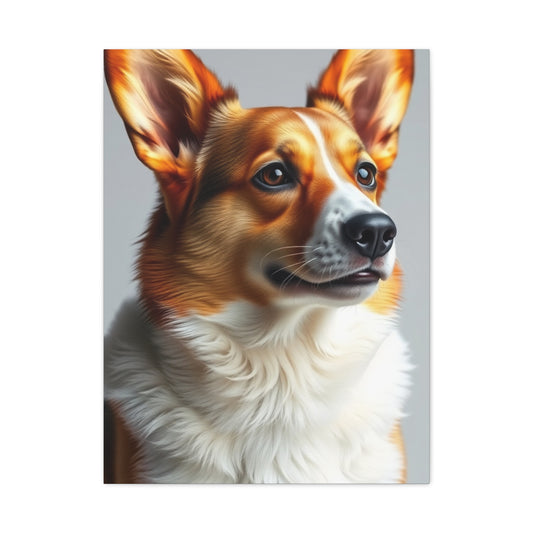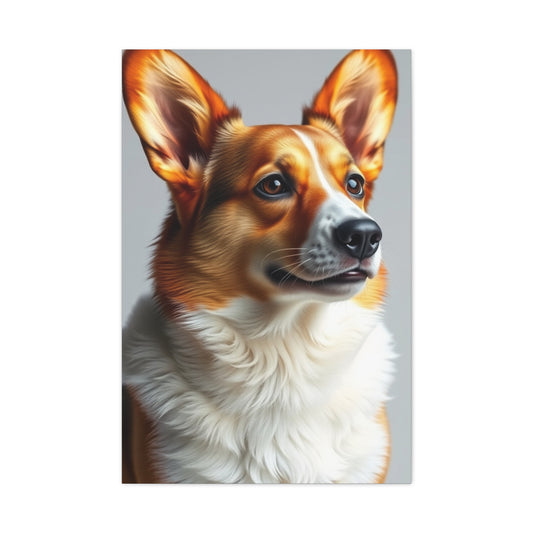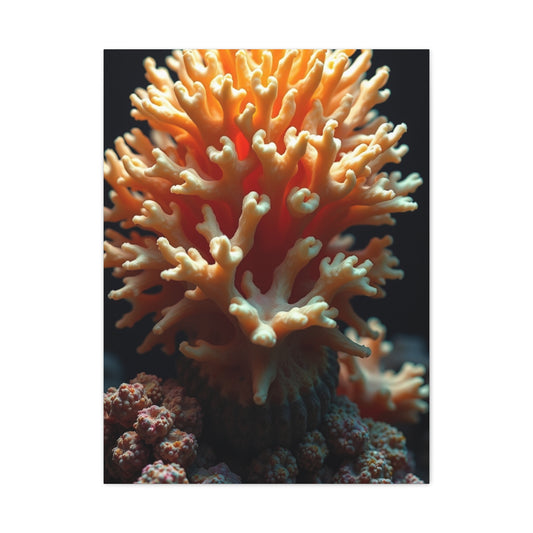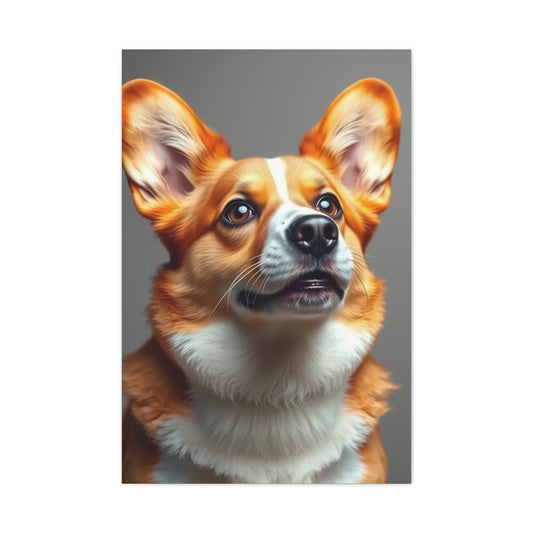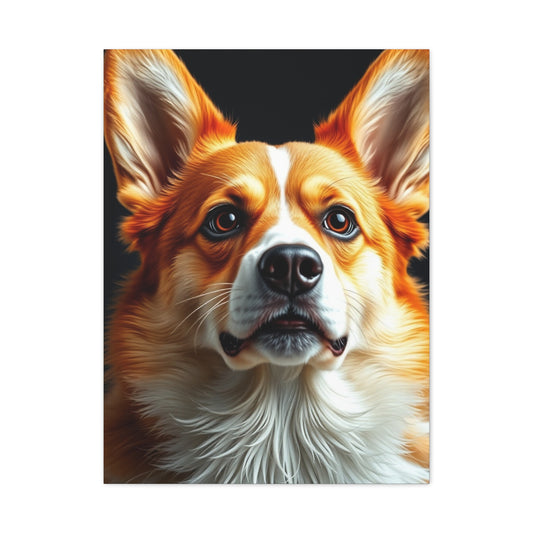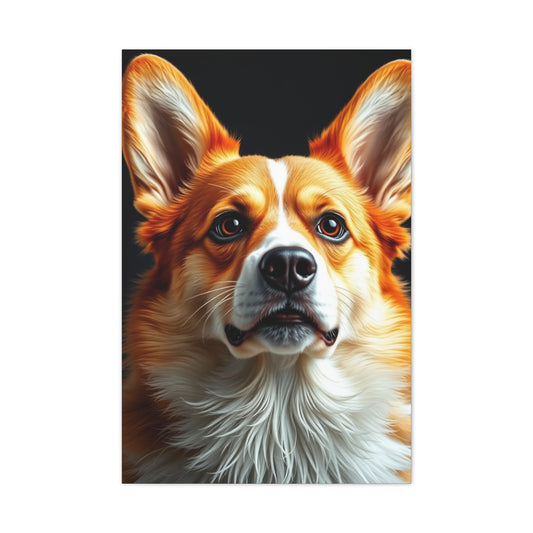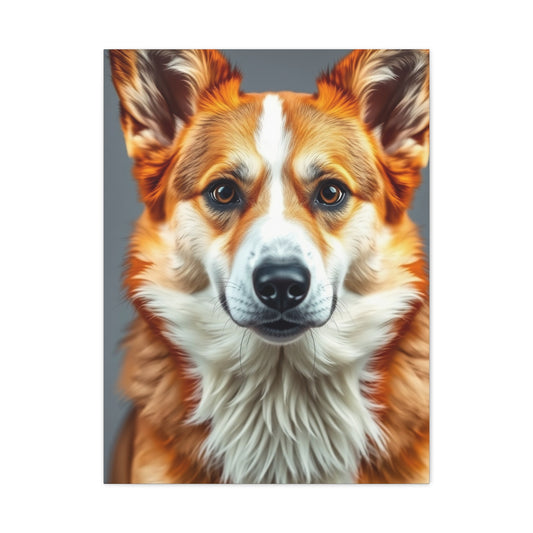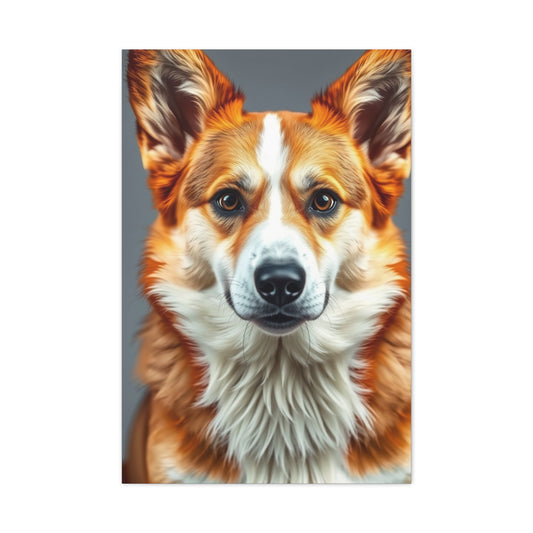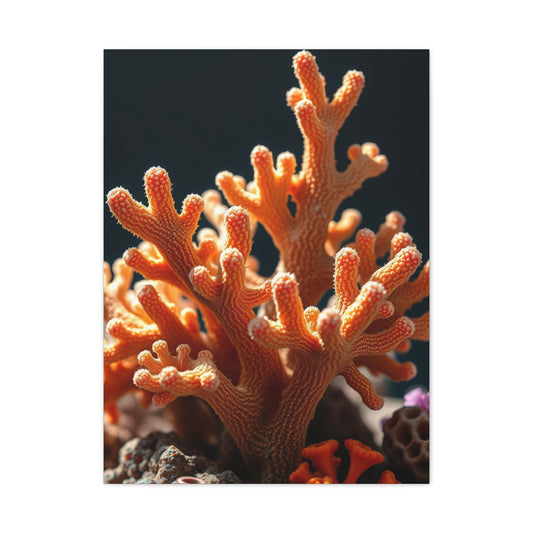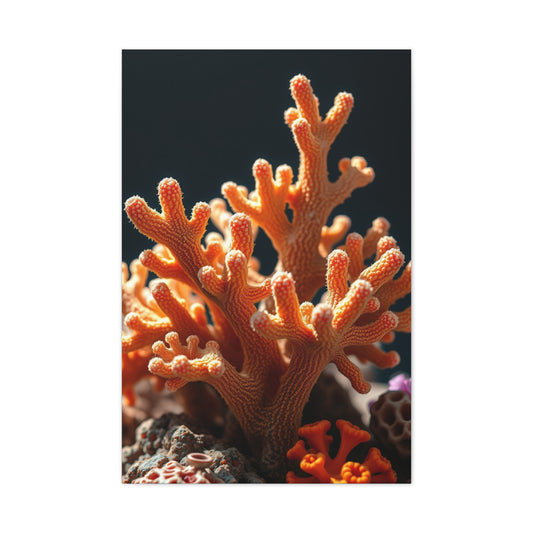Every year, colour enthusiasts, designers, and artists wait in anticipation for Pantone’s announcement of the Colour of the Year. It’s not just about a hue; it’s a reflection of collective emotion, cultural mood, and creative direction. For 2020, Pantone introduced Classic Blue (PANTONE 19-4052) — a deep, soothing shade that represents calm, confidence, and connection. It captures the tranquillity of the evening sky and the reliability of timeless design. The choice of this colour came at a time when the world was seeking reassurance and balance — and Classic Blue perfectly embodies that sentiment.
The Significance Of Pantone’s Classic Blue
Classic Blue is not a loud or overpowering shade; it’s refined, dependable, and universally appealing. It bridges traditional and contemporary sensibilities, making it a favourite among interior designers. Its psychological impact is profound — blue, in general, is associated with serenity and trust, while this specific shade adds a sense of grounding and clarity. In a world filled with constant movement and digital overload, Classic Blue offers a space to breathe and reset.
Its association with the vastness of the sky and the depth of the ocean evokes an almost meditative calm. At the same time, it’s a colour that signifies strength and stability — essential emotions for both personal and collective wellbeing. The tone works equally well in minimalist settings as it does in eclectic spaces. Whether used as an accent or a dominant hue, it exudes sophistication without being pretentious.
Why Classic Blue Works For Home Interiors
In home interiors, colour plays a powerful role in shaping mood and character. Classic Blue’s versatility makes it an ideal choice across styles — be it coastal, contemporary, Scandinavian, bohemian, or traditional. It seamlessly pairs with whites, greys, soft pastels, and even metallics. Depending on how it’s used, it can create a dramatic focal point or a subtle background of tranquillity.
This shade can appear both bold and gentle, depending on the lighting and materials around it. For example, in bright natural light, Classic Blue feels fresh and breezy, while under warmer artificial light, it takes on a richer, cosier tone. That adaptability makes it perfect for diverse environments — from modern city apartments to serene countryside homes.
Classic Blue also invites experimentation. It pairs beautifully with textures like linen, velvet, rattan, or natural wood, enhancing their tactile appeal. In a time when design is as much about emotional comfort as it is about aesthetics, this hue offers the perfect balance of familiarity and freshness.
Adding Classic Blue To Your Home — The Easy Way
For those who want to bring the spirit of 2020’s colour into their living space, there’s no single formula. You can go bold with a feature wall or subtle with smaller details like cushions, drapes, or ceramics. The key is harmony — knowing where and how much to use the colour to enhance your home’s energy rather than overwhelm it.
Let’s begin with one of the most impactful yet practical ways to invite Classic Blue indoors — seating.
Seating That Makes A Statement
Furniture often anchors a room, and a well-chosen piece in Classic Blue can transform the entire atmosphere. Imagine a plush velvet sofa in this deep hue becoming the centrepiece of your living area. It’s both inviting and elegant. Unlike neutral-toned couches, which tend to blend in, a blue one stands out while maintaining a sense of calm.
You can also experiment with accent chairs, bar stools, or pouffes in Classic Blue. These pieces add vibrancy without taking over the space. In open-plan living rooms, blue bar stools at the kitchen counter create a seamless link between spaces while adding a contemporary flair.
For smaller homes or apartments, a blue bean bag or an armchair tucked into a reading corner can be just enough to introduce the colour. The key is to pair these elements with soft neutral backgrounds — think ivory walls, beige rugs, or wooden floors — to let the blue truly shine.
Walls That Speak Calm
If you’re ready for a more immersive experience, painting a wall in Classic Blue is an excellent choice. While painting an entire room in this colour might feel overwhelming, using it strategically on one feature wall can completely change the feel of your space.
A deep blue wall behind a bed or sofa creates an instant sense of depth and drama. Pair it with white trim, natural wood furniture, and soft lighting to achieve a cosy yet sophisticated ambience. In smaller rooms, using Classic Blue on a single wall helps visually expand the space by adding contrast and dimension.
For those hesitant to commit to a solid wall colour, try using patterned wallpaper featuring tones of Classic Blue. Geometric or floral motifs in this hue blend traditional and modern aesthetics while keeping the space lively.
Cabinets And Shutters With A Twist
Classic Blue also works beautifully in kitchens and storage areas — places often overlooked when it comes to bold design. Painted cabinetry in this shade looks clean, stylish, and timeless. It’s an unexpected twist that gives your cooking space an elegant upgrade. When paired with brass or gold handles, the contrast feels both luxurious and balanced.
In addition to cabinets, consider blue sideboards, consoles, or bedside tables. These smaller furniture pieces let you experiment without taking on a full redesign. Even painting the inside of a shelf or the back panel of a cabinet in Classic Blue adds a subtle yet refined touch.
If you love the look of Mediterranean or coastal homes, try painting your window shutters in this shade. It instantly transforms a plain exterior into something picturesque. Against white or cream walls, blue shutters create a fresh, sunlit aesthetic reminiscent of seaside cottages and Santorini-inspired facades.
Soft Textures And Fabrics That Warm The Space
For those who prefer temporary, easy-to-change elements, textiles are the simplest way to embrace the colour trend. Cushions, throws, and bedspreads in Classic Blue bring warmth and balance to neutral-toned rooms. They can soften hard lines in modern spaces and add a cosy vibe during colder months.
Mix and match materials — think velvet cushions, linen covers, or embroidered fabrics. The richness of blue deepens with texture, allowing light to play beautifully across surfaces. Even a few blue cushions on a cream sofa can redefine a room’s palette, adding both elegance and comfort.
In bedrooms, Classic Blue bed linen or a patterned duvet instantly upgrades the space. When paired with crisp white sheets, the result feels refreshing and timeless. If you prefer something more understated, introduce blue through smaller accents like lampshades, runners, or table mats. These little touches have a big visual impact.
Drapes That Define The Mood
Curtains and drapes are often underappreciated design tools, yet they frame the light and movement in a space. Classic Blue drapes can make a stunning statement, particularly in rooms with tall windows or high ceilings. When sunlight filters through, it casts a subtle hue that shifts the room’s tone throughout the day.
Layering also works beautifully — sheer white curtains beneath heavier blue drapes create depth and softness. This combination feels both fresh and sophisticated, allowing flexibility with how much colour you want to display at a time.
In living areas, long blue drapes paired with neutral furniture and gold-toned decor lend an upscale feel. Meanwhile, in bedrooms, lighter cotton or linen curtains in Classic Blue offer a calm, restful atmosphere.
A Foundation For Timeless Design
Beyond its aesthetic appeal, Classic Blue is a grounding element in design. It ties different components of a room together, helping to create a cohesive look. Whether used sparingly or in larger doses, it brings a sense of intention — each corner feels curated, not random.
Its beauty lies in its longevity. While design trends come and go, this shade never truly fades from relevance. It’s timeless — adaptable across decades, cultures, and moods. The same tone that feels fresh and modern today will remain elegant years down the line.
When paired with contemporary design elements such as minimalistic furniture, sleek lighting, and clean lines, it looks effortlessly current. At the same time, it complements vintage accents, patterned tiles, or rustic woodwork with equal grace.
Classic Blue also encourages creativity. Designers often use it as a grounding hue to balance brighter or experimental tones like mustard, coral, or mint. For homeowners, that means it can serve as a flexible base colour for future updates without requiring an entire redesign.
Creating Emotional Balance Through Colour
One of the reasons Pantone’s annual colour choice resonates so deeply is that it reflects collective emotions. In 2020, Classic Blue represented the need for reassurance and peace in an unpredictable world. That emotional quality translates beautifully into interiors.
Walking into a room dominated by Classic Blue feels like taking a deep breath. It promotes relaxation and mindfulness, ideal for bedrooms, study corners, or reading nooks. Its association with clarity and introspection makes it a wonderful backdrop for creative pursuits — a home office painted in this shade might subtly enhance focus and productivity.
At the same time, the colour evokes nostalgia. It reminds us of twilight skies, deep oceans, and quiet moments — timeless experiences that bring comfort. This blend of familiarity and serenity is what makes it so universally loved.
As Classic Blue continues to captivate designers and homeowners alike, its presence in home interiors has gone beyond trend status — it has become a modern classic. The hue offers both emotional stability and aesthetic depth, perfectly aligning with the desire for calm and grounded spaces in an ever-evolving world. After exploring its foundational appeal and larger design elements, let’s now dive into how subtle, creative, and layered details can transform a home with this timeless shade.
Textiles That Tell A Story
Textiles form the soul of home décor. They bring warmth, texture, and personality to any environment. Classic Blue, with its rich undertones, adapts effortlessly to different materials — from delicate cotton to luxurious velvet. When used thoughtfully, it can create visual rhythm across rooms.
Imagine a living space where soft furnishings echo the natural serenity of the evening sky. Blue throws casually draped over neutral-toned sofas add depth and an instant sense of relaxation. The charm lies in variation — you can play with patterns, weaves, and finishes to make the hue come alive. For example, handwoven blue rugs or embroidered cushion covers carry artisanal charm, while silk or satin fabrics reflect light elegantly for a more refined effect.
In bedrooms, Classic Blue bedding brings sophistication and comfort. Layering different textures — cotton sheets, linen covers, or a velvet bedspread — builds a dynamic yet cohesive palette. The result is a space that feels restful and grounded. The colour’s natural coolness balances well with warmer materials such as rattan headboards or wooden flooring, making the entire composition feel harmonious.
Textiles also offer flexibility. They can be changed with seasons, moods, or evolving preferences. A blue bedspread or curtain can easily be replaced or paired with softer tones like beige or blush pink when you crave variety. That adaptability makes Classic Blue a colour that never overcommits — it enhances rather than dictates your space.
Curtains And Drapes That Frame Serenity
Curtains are one of the most underrated design tools. They have the power to set the tone for a room — literally framing the view of the world outside. Choosing Classic Blue for drapes or sheers instantly creates an atmosphere of calm sophistication.
For airy spaces with large windows, lightweight linen or cotton drapes in Classic Blue softly diffuse natural light. The subtle hue variation that occurs as sunlight filters through gives the room a tranquil glow, reminiscent of coastal mornings. For a more luxurious appeal, heavier fabrics like velvet or jacquard create a regal backdrop that works beautifully in living rooms or formal spaces.
Layering drapery adds depth. Sheer white curtains behind deep blue ones produce an interplay of translucence and privacy — a combination that looks as timeless as it feels comfortable. Tassels, trims, or tiebacks in complementary tones like silver or gold can accentuate the elegance without overpowering the colour.
What makes blue particularly effective in window treatments is its versatility. While darker tones evoke calm and intimacy, lighter shades of the same spectrum feel breezy and open. This adaptability allows homeowners to align their curtain choices with both light conditions and the desired mood of the room.
Art And Wall Décor That Capture Imagination
One of the most effortless ways to incorporate Classic Blue into interiors is through artwork. Whether in the form of abstract paintings, digital prints, or handmade crafts, the colour brings emotional balance and sophistication to walls.
A large canvas featuring hues of blue can act as a conversation starter in a minimalist living room. Abstract pieces with fluid brushstrokes mirror the tranquil movement of water or sky, creating a meditative effect. In contrast, geometric patterns or modern line art in blue tones complement contemporary spaces that value structure and simplicity.
For those who prefer subtler applications, framed prints or photographic artworks in Classic Blue can tie a room’s palette together. Even a single piece of art placed strategically above a console or bed can transform the visual harmony of a space. If you enjoy DIY projects, painting a simple motif or reimagining old frames in Classic Blue can be a rewarding way to personalise your décor.
The beauty of wall art lies in its impermanence — it can evolve as your taste does. Swapping or rotating pieces allows your space to remain dynamic while keeping Classic Blue as a consistent thread throughout.
Rugs That Ground The Room
While walls and furniture often dominate visual attention, flooring plays an equally significant role in design. A rug in Classic Blue can anchor a room, creating cohesion among diverse elements. Its presence instantly softens acoustics and visually defines zones within open layouts.
A richly textured rug in blue works beautifully in living areas, especially when paired with neutral or earthy furniture. Depending on your taste, you can choose between subtle tone-on-tone weaves or bold patterns with contrasting colours like cream, mustard, or charcoal. The goal is to find a balance where the rug complements rather than competes with surrounding elements.
In bedrooms, a soft blue rug underfoot adds a cosy touch that makes mornings feel gentler. In dining spaces, a patterned rug in the same hue provides an elegant contrast beneath wooden tables and chairs. For smaller areas, runners or circular mats in Classic Blue can introduce colour without overwhelming the layout.
Handcrafted rugs made from natural fibres like jute or wool take on a deeper character when dyed in blue. The imperfections in texture and tone lend authenticity, making each piece feel unique. Moreover, rugs are practical investments — they protect floors, add warmth, and, when chosen thoughtfully, become silent storytellers of comfort.
Headboards That Define Comfort And Style
Bedrooms are sanctuaries, and a well-designed headboard can become their defining feature. A Classic Blue headboard brings instant character to any sleeping space. Whether upholstered in soft fabric or finished with painted wood, it turns an ordinary bed into a statement of elegance.
A tufted velvet headboard in blue radiates luxury and depth, ideal for rooms with muted wall colours. For a more modern approach, sleek wooden or upholstered panels in this shade create structure and symmetry. When paired with crisp white linens or pale grey bedding, the look becomes effortlessly chic.
One of the key advantages of using Classic Blue in a headboard is its emotional quality. The colour naturally induces calm — a crucial aspect for restful environments. It provides a visual anchor while maintaining a soothing tone, encouraging relaxation and mindfulness.
For those inclined toward creative expression, combining blue with metallic accents like brass buttons or silver trim can add dimension and glamour. If you prefer minimalism, even a flat panel painted in Classic Blue can have a powerful impact, transforming the wall behind it into a serene focal point.
Accessories That Add A Subtle Touch
Sometimes, it’s the smallest details that make the biggest difference. Home accessories in Classic Blue offer an easy way to weave the colour throughout your interiors without extensive changes. Decorative vases, lamps, candles, or photo frames can introduce measured doses of the hue into different rooms.
Ceramic pottery or glassware in blue tones adds personality to shelves, dining tables, or mantels. Their reflective surfaces catch light beautifully, lending depth to both natural and artificial illumination. In kitchens, a set of blue mugs or plates can elevate everyday rituals into moments of quiet delight.
Lighting fixtures, especially lamps with Classic Blue shades or bases, create a cosy glow that complements evening ambience. In home offices, blue desk accessories or organisers subtly reinforce focus and calm — two traits linked to the psychological influence of this colour.
Even something as simple as a blue clock on a neutral wall can shift the balance of a room, adding vibrancy without intrusion. These smaller accents demonstrate how the colour can be integrated naturally, creating cohesion without the need for drastic makeovers.
Combining Classic Blue With Complementary Colours
The beauty of Classic Blue lies not just in its individual charm but also in its ability to harmonise with other shades. Pairing it thoughtfully with complementary tones enhances its impact and brings out different personalities within a space.
For an airy and balanced look, combine Classic Blue with crisp whites and soft greys. This pairing evokes a coastal or Scandinavian feel, emphasising cleanliness and light. When seeking warmth, add touches of terracotta, blush, or mustard. These hues offset the coolness of blue and create a lively, inviting contrast.
Metallics also work wonderfully. Gold or brass accents introduce luxury, while silver and chrome lend modern sophistication. Natural textures — wood, cane, or stone — balance blue’s depth with earthy grounding, ensuring the room never feels too cold or distant.
Layering different shades within the blue family itself also creates dimension. Navy, cobalt, and powder blue can coexist in the same space when balanced through textures and materials. The result is a room that feels cohesive yet visually rich.
Blue Beyond Aesthetic — The Emotional Influence
Design psychology often highlights how colour influences mood and perception. Classic Blue, in particular, has a calming effect that resonates deeply with modern living. It embodies reassurance, dependability, and quiet confidence — qualities that many seek within their homes.
Spaces adorned with this hue feel composed and intentional. They encourage introspection and slow living — an antidote to digital overload. In social settings like dining areas or living rooms, Classic Blue fosters a sense of trust and openness, subtly encouraging meaningful interactions.
In bedrooms and private spaces, the colour creates an atmosphere conducive to rest and reflection. Its timeless nature ensures it doesn’t feel trendy or fleeting, allowing homeowners to build lasting connections with their surroundings.
Ultimately, Classic Blue transcends decoration; it shapes experience. It’s a reminder that the spaces we inhabit can nurture emotional balance, grounding us in a world that often feels uncertain.
A Hue That Bridges The Past And Future
Classic Blue stands as a bridge between heritage and innovation. It recalls the enduring beauty of traditional interiors while aligning seamlessly with modern design principles. Its familiarity offers comfort, yet its adaptability keeps it relevant across decades.
In a minimalist setting, it adds a pop of definition. A traditional room filled with patterns and textures provides visual rest. This duality makes it one of the most versatile colours ever chosen as Pantone’s annual representative.
Designers often describe it as a “forever colour” — one that transcends time and geography. Its symbolism of depth, faith, and stability continues to resonate long after trends shift. That enduring quality is perhaps what makes Classic Blue so special: it’s more than a colour of the year; it’s a colour for all years. As Classic Blue continues to captivate designers and homeowners alike, its presence in home interiors has gone beyond trend status — it has become a modern classic. The hue offers both emotional stability and aesthetic depth, perfectly aligning with the desire for calm and grounded spaces in an ever-evolving world. After exploring its foundational appeal and larger design elements, let’s now dive into how subtle, creative, and layered details can transform a home with this timeless shade.
Textiles That Tell A Story
Textiles form the soul of home décor. They bring warmth, texture, and personality to any environment. Classic Blue, with its rich undertones, adapts effortlessly to different materials — from delicate cotton to luxurious velvet. When used thoughtfully, it can create visual rhythm across rooms.
Imagine a living space where soft furnishings echo the natural serenity of the evening sky. Blue throws casually draped over neutral-toned sofas add depth and an instant sense of relaxation. The charm lies in variation — you can play with patterns, weaves, and finishes to make the hue come alive. For example, handwoven blue rugs or embroidered cushion covers carry artisanal charm, while silk or satin fabrics reflect light elegantly for a more refined effect.
In bedrooms, Classic Blue bedding brings sophistication and comfort. Layering different textures — cotton sheets, linen covers, or a velvet bedspread — builds a dynamic yet cohesive palette. The result is a space that feels restful and grounded. The colour’s natural coolness balances well with warmer materials such as rattan headboards or wooden flooring, making the entire composition feel harmonious.
Textiles also offer flexibility. They can be changed with seasons, moods, or evolving preferences. A blue bedspread or curtain can easily be replaced or paired with softer tones like beige or blush pink when you crave variety. That adaptability makes Classic Blue a colour that never overcommits — it enhances rather than dictates your space.
Curtains And Drapes That Frame Serenity
Curtains are one of the most underrated design tools. They have the power to set the tone for a room — literally framing the view of the world outside. Choosing Classic Blue for drapes or sheers instantly creates an atmosphere of calm sophistication.
For airy spaces with large windows, lightweight linen or cotton drapes in Classic Blue softly diffuse natural light. The subtle hue variation that occurs as sunlight filters through gives the room a tranquil glow, reminiscent of coastal mornings. For a more luxurious appeal, heavier fabrics like velvet or jacquard create a regal backdrop that works beautifully in living rooms or formal spaces.
Layering drapery adds depth. Sheer white curtains behind deep blue ones produce an interplay of translucence and privacy — a combination that looks as timeless as it feels comfortable. Tassels, trims, or tiebacks in complementary tones like silver or gold can accentuate the elegance without overpowering the colour.
What makes blue particularly effective in window treatments is its versatility. While darker tones evoke calm and intimacy, lighter shades of the same spectrum feel breezy and open. This adaptability allows homeowners to align their curtain choices with both light conditions and the desired mood of the room.
Art And Wall Décor That Capture Imagination
One of the most effortless ways to incorporate Classic Blue into interiors is through artwork. Whether in the form of abstract paintings, digital prints, or handmade crafts, the colour brings emotional balance and sophistication to walls.
A large canvas featuring hues of blue can act as a conversation starter in a minimalist living room. Abstract pieces with fluid brushstrokes mirror the tranquil movement of water or sky, creating a meditative effect. In contrast, geometric patterns or modern line art in blue tones complement contemporary spaces that value structure and simplicity.
For those who prefer subtler applications, framed prints or photographic artworks in Classic Blue can tie a room’s palette together. Even a single piece of art placed strategically above a console or bed can transform the visual harmony of a space. If you enjoy DIY projects, painting a simple motif or reimagining old frames in Classic Blue can be a rewarding way to personalise your décor.
The beauty of wall art lies in its impermanence — it can evolve as your taste does. Swapping or rotating pieces allows your space to remain dynamic while keeping Classic Blue as a consistent thread throughout.
Rugs That Ground The Room
While walls and furniture often dominate visual attention, flooring plays an equally significant role in design. A rug in Classic Blue can anchor a room, creating cohesion among diverse elements. Its presence instantly softens acoustics and visually defines zones within open layouts.
A richly textured rug in blue works beautifully in living areas, especially when paired with neutral or earthy furniture. Depending on your taste, you can choose between subtle tone-on-tone weaves or bold patterns with contrasting colours like cream, mustard, or charcoal. The goal is to find a balance where the rug complements rather than competes with surrounding elements.
In bedrooms, a soft blue rug underfoot adds a cosy touch that makes mornings feel gentler. In dining spaces, a patterned rug in the same hue provides an elegant contrast beneath wooden tables and chairs. For smaller areas, runners or circular mats in Classic Blue can introduce colour without overwhelming the layout.
Handcrafted rugs made from natural fibres like jute or wool take on a deeper character when dyed in blue. The imperfections in texture and tone lend authenticity, making each piece feel unique. Moreover, rugs are practical investments — they protect floors, add warmth, and, when chosen thoughtfully, become silent storytellers of comfort.
Headboards That Define Comfort And Style
Bedrooms are sanctuaries, and a well-designed headboard can become their defining feature. A Classic Blue headboard brings instant character to any sleeping space. Whether upholstered in soft fabric or finished with painted wood, it turns an ordinary bed into a statement of elegance.
A tufted velvet headboard in blue radiates luxury and depth, ideal for rooms with muted wall colours. For a more modern approach, sleek wooden or upholstered panels in this shade create structure and symmetry. When paired with crisp white linens or pale grey bedding, the look becomes effortlessly chic.
One of the key advantages of using Classic Blue in a headboard is its emotional quality. The colour naturally induces calm — a crucial aspect for restful environments. It provides a visual anchor while maintaining a soothing tone, encouraging relaxation and mindfulness.
For those inclined toward creative expression, combining blue with metallic accents like brass buttons or silver trim can add dimension and glamour. If you prefer minimalism, even a flat panel painted in Classic Blue can have a powerful impact, transforming the wall behind it into a serene focal point.
Accessories That Add A Subtle Touch
Sometimes, it’s the smallest details that make the biggest difference. Home accessories in Classic Blue offer an easy way to weave the colour throughout your interiors without extensive changes. Decorative vases, lamps, candles, or photo frames can introduce measured doses of the hue into different rooms.
Ceramic pottery or glassware in blue tones adds personality to shelves, dining tables, or mantels. Their reflective surfaces catch light beautifully, lending depth to both natural and artificial illumination. In kitchens, a set of blue mugs or plates can elevate everyday rituals into moments of quiet delight.
Lighting fixtures, especially lamps with Classic Blue shades or bases, create a cosy glow that complements evening ambience. In home offices, blue desk accessories or organisers subtly reinforce focus and calm — two traits linked to the psychological influence of this colour.
Even something as simple as a blue clock on a neutral wall can shift the balance of a room, adding vibrancy without intrusion. These smaller accents demonstrate how the colour can be integrated naturally, creating cohesion without the need for drastic makeovers.
Combining Classic Blue With Complementary Colours
The beauty of Classic Blue lies not just in its individual charm but also in its ability to harmonise with other shades. Pairing it thoughtfully with complementary tones enhances its impact and brings out different personalities within a space.
For an airy and balanced look, combine Classic Blue with crisp whites and soft greys. This pairing evokes a coastal or Scandinavian feel, emphasising cleanliness and light. When seeking warmth, add touches of terracotta, blush, or mustard. These hues offset the coolness of blue and create a lively, inviting contrast.
Metallics also work wonderfully. Gold or brass accents introduce luxury, while silver and chrome lend modern sophistication. Natural textures — wood, cane, or stone — balance blue’s depth with earthy grounding, ensuring the room never feels too cold or distant.
Layering different shades within the blue family itself also creates dimension. Navy, cobalt, and powder blue can coexist in the same space when balanced through textures and materials. The result is a room that feels cohesive yet visually rich.
Blue Beyond Aesthetic — The Emotional Influence
Design psychology often highlights how colour influences mood and perception. Classic Blue, in particular, has a calming effect that resonates deeply with modern living. It embodies reassurance, dependability, and quiet confidence — qualities that many seek within their homes.
Spaces adorned with this hue feel composed and intentional. They encourage introspection and slow living — an antidote to digital overload. In social settings like dining areas or living rooms, Classic Blue fosters a sense of trust and openness, subtly encouraging meaningful interactions.
In bedrooms and private spaces, the colour creates an atmosphere conducive to rest and reflection. Its timeless nature ensures it doesn’t feel trendy or fleeting, allowing homeowners to build lasting connections with their surroundings.
Ultimately, Classic Blue transcends decoration; it shapes experience. It’s a reminder that the spaces we inhabit can nurture emotional balance, grounding us in a world that often feels uncertain.
A Hue That Bridges The Past And Future
Classic Blue stands as a bridge between heritage and innovation. It recalls the enduring beauty of traditional interiors while aligning seamlessly with modern design principles. Its familiarity offers comfort, yet its adaptability keeps it relevant across decades.
As Classic Blue found its way into homes across the world in 2020, it quickly became clear that this shade wasn’t a fleeting trend. Its appeal lies in its adaptability — an ability to fit effortlessly into various corners of a home while retaining its distinct personality. Whether used sparingly or boldly, it transforms spaces with calm confidence. Having explored furniture, fabrics, and accents, it’s time to see how Classic Blue can redefine kitchens, bathrooms, outdoor areas, and lighting design in ways both subtle and powerful.
Kitchen Design: A Bold Return To Colour
For years, the modern kitchen has leaned heavily toward neutral tones — whites, greys, and light wood dominating the palette. But Classic Blue changed that narrative. It reintroduced the idea that colour could belong in the heart of the home. The kitchen, often a space for creativity and connection, benefits from the depth and freshness that this hue brings.
Classic Blue cabinetry instantly makes a statement without feeling loud. When paired with marble or light quartz countertops, it achieves a perfect balance between vibrancy and elegance. The colour provides depth that grounds the space while still allowing other materials — wood, stone, or metal — to shine.
Those who prefer a minimalist design can introduce blue through lower cabinets or kitchen islands, keeping the upper areas neutral to maintain openness. Alternatively, using blue on the backsplash tiles offers a contemporary yet timeless effect. Glossy ceramic tiles reflect light beautifully, while matte or textured finishes create an earthy, handcrafted feel.
Pairing Classic Blue with brass or gold handles elevates the look further, giving the kitchen a refined, bespoke quality. For industrial-style spaces, brushed steel or black fittings contrast sharply against blue surfaces, adding a sense of urban sophistication.
Even smaller details, such as blue bar stools, utensil holders, or dishware, can add coherence and personality without overcommitting to bold cabinetry. The result is a kitchen that feels inviting, grounded, and full of energy — a space that celebrates both function and emotion.
Dining Areas: Setting The Mood With Blue
Dining spaces are where conversation and comfort intertwine, and colour plays a significant role in shaping that experience. Classic Blue, with its soothing yet confident tone, helps create an environment conducive to connection.
A dining table set against a blue accent wall instantly draws attention, becoming the focal point of the room. Upholstered chairs in this hue add warmth and texture, especially when contrasted with wooden or metallic frames. For a cohesive look, soft furnishings such as placemats, napkins, or runners in varying shades of blue can tie the entire setting together.
Lighting also enhances the dining atmosphere. Pendant lights with subtle blue glass shades or metallic blue finishes diffuse a gentle glow that complements evening meals. When used in moderation, these lighting elements bring sophistication and intimacy to gatherings.
For those who love to experiment, blue tableware is an elegant touch. Ceramic plates, glassware, or serving bowls in Classic Blue tones can transform everyday dining into a stylish ritual. The hue’s calming nature balances the sensory experience of food, making the table feel both grounded and vibrant.
Bathrooms: A Haven Of Calm
Few spaces benefit from Classic Blue’s serene energy as much as the bathroom. This is a room meant for renewal and stillness — qualities that align perfectly with the psychology of the colour. Blue tones have long been associated with water, reflection, and clarity, making them an ideal choice for modern bathrooms.
Tiles are the easiest way to introduce the shade. Deep blue mosaic or subway tiles create a spa-like atmosphere, while lighter blue walls or patterned accents offer a coastal touch. When combined with white or light grey fixtures, the space feels airy and expansive.
For smaller bathrooms, Classic Blue can be used on cabinetry, mirrors, or even towels and bath mats to add interest without overwhelming the space. It can also work beautifully in vintage or art deco-inspired bathrooms when paired with gold fixtures and patterned floor tiles.
Lighting, once again, plays a crucial role. Warm white or soft yellow lighting offsets blue’s coolness, ensuring the space remains inviting rather than stark. Scented candles, natural stone accessories, and wooden accents can further enhance the sense of calm, turning the bathroom into a rejuvenating retreat.
Bedrooms: Layering Serenity
Classic Blue naturally complements bedrooms due to its restful qualities. But beyond accent walls or headboards, the colour can be used through layered elements to create a deeply immersive atmosphere.
Layering involves blending different materials, tones, and shapes while maintaining harmony. In the context of blue, this could mean combining velvet cushions with linen drapes, or pairing dark blue walls with lighter textiles for balance. Incorporating subtle patterns — stripes, florals, or geometric prints — adds visual interest while keeping the overall tone gentle.
For a sophisticated approach, mix Classic Blue with smoky greys, ivory, or muted blush. Metallic touches such as brass lamps, silver frames, or gold-edged mirrors introduce contrast without breaking the tranquillity.
Art pieces or decorative ceramics in blue can anchor the design, while neutral flooring keeps the space grounded. This approach transforms the bedroom into a layered haven that feels both rich and restful — the perfect escape from daily noise.
Lighting And Atmosphere
Light defines how colour behaves within a room. Classic Blue, depending on illumination, can shift from deep and dramatic to soft and dreamy. This makes lighting choices essential in bringing out the best in the shade.
In naturally bright rooms, the colour reveals its breezy side — clean, open, and expansive. During the evening, however, artificial light enhances its warmth and depth. For instance, warm LED bulbs or amber-toned lampshades soften blue’s cool undertone, creating a sense of balance.
Accent lighting also works wonders. Spotlights highlighting a blue wall or artwork add sophistication, while floor lamps or pendant lights with diffused shades can build ambience in living and dining spaces. For creative homeowners, coloured glass fixtures or transparent pendants in faint blue hues subtly echo the theme without overpowering other décor.
Candlelight, too, has its place — the flicker of flame against a blue backdrop creates a sense of comfort reminiscent of twilight skies. It’s a gentle reminder that lighting isn’t just functional; it’s emotional, transforming spaces through tone and shadow.
Outdoor And Exterior Design
Classic Blue isn’t limited to interiors. Its charm extends beautifully to exteriors, verandas, balconies, and garden spaces. Against natural light, the colour appears vivid and full of life, complementing greenery and stone textures with striking contrast.
Exterior doors painted in Classic Blue immediately enhance curb appeal. The colour symbolises trust and hospitality, making entrances feel both welcoming and dignified. When paired with white trims or stone surroundings, it evokes the charm of coastal homes.
For those who enjoy outdoor living, patio furniture in blue tones creates a relaxing and cohesive environment. Cushions, planters, and decorative ceramics in varying shades of blue blend seamlessly with nature, mirroring the sky above. Adding woven materials like cane or rattan in natural hues keeps the look organic and balanced.
Balcony walls or railings in Classic Blue offer a subtle yet refreshing change, especially in urban settings where outdoor areas serve as private sanctuaries. In gardens, blue pots or stepping stones add whimsical touches that draw the eye without disrupting natural beauty.
The colour’s durability also makes it suitable for exteriors — it hides dust and wears better than lighter hues, maintaining its elegance over time. It’s a practical yet artistic choice for facades seeking a timeless character.
Kitchens And Bathrooms: Combining Function With Style
Beyond colour placement, the materials paired with Classic Blue influence how it’s perceived. In kitchens, matte finishes exude sophistication, while glossy surfaces reflect light for a livelier effect. In bathrooms, textured tiles or stone countertops add tactile contrast that enriches the experience of touch and sight.
One striking combination involves Classic Blue cabinetry with open wooden shelving. The warmth of natural wood tones offsets blue’s coolness, resulting in a balanced and grounded aesthetic. In smaller kitchens, this mix prevents the space from feeling heavy.
For contemporary bathrooms, pairing blue with concrete or stone creates a minimalist yet luxurious atmosphere. Adding subtle greenery — like indoor plants — further enhances the feeling of freshness. Even accessories such as soap dispensers, towels, and mirrors framed in blue accents can tie the theme together effortlessly.
Seasonal Adaptation
Classic Blue has the rare ability to adapt with the seasons. In summer, it feels light and airy when paired with whites and natural fibres like jute or cotton. During colder months, layering it with darker tones — charcoal, burgundy, or forest green — gives warmth and depth.
This adaptability ensures the colour remains relevant year-round. For spring, pairing it with soft pastels like lavender or mint adds freshness. Autumn calls for pairing blue with copper or terracotta accents, creating cosy yet sophisticated interiors. The key lies in balance: allowing Classic Blue to lead while letting seasonal hues accentuate its versatility.
Pairing Blue With Materials
Materials play a crucial role in bringing out the best of Classic Blue. Its depth interacts beautifully with both matte and reflective surfaces. When combined with glass, it takes on a contemporary sleekness. With wood, it feels grounded and natural. Against metals, it becomes glamorous and bold.
In living spaces, consider pairing blue with warm materials like walnut, oak, or bamboo. The natural grains enhance the hue’s richness, while metallic decor — picture frames, lamp bases, or mirror trims — introduce an element of luxury.
Textured materials like wool, leather, and linen harmonise well with Classic Blue, too. Their tactile qualities bring out the shade’s emotional depth, creating a space that feels intimate and lived-in.
Blue As A Connector
Perhaps the most interesting quality of Classic Blue is its ability to connect different spaces within a home. Using the shade in small, consistent doses — like artwork frames, planters, or decorative accessories — helps maintain visual flow from one room to another.
For instance, a hallway with blue wall art that leads into a living room with blue cushions subtly ties the spaces together. Similarly, a bathroom with blue tiles adjacent to a bedroom with blue drapes creates harmony without repetition. This consistency lends homes a curated, cohesive feel, much like a well-composed piece of music with recurring motifs.
The Essence Of Enduring Design
Ultimately, Classic Blue’s enduring charm lies in its emotional depth and practical adaptability. It embodies a return to simplicity — a reminder that comfort and style don’t always require excess. By weaving it thoughtfully across interiors and exteriors, homeowners can craft environments that are timeless yet expressive.
It’s a colour that complements daily routines and quiet evenings alike. It doesn’t demand attention but gently draws it. Whether in a statement wall, a ceramic vase, or an accent rug, Classic Blue adds an invisible thread of harmony that ties a home together.
As trends evolve and new palettes emerge, Classic Blue continues to remind us of the value of balance — between tradition and innovation, energy and calm, individuality and universality. It’s not just the colour of a single year, but a reflection of enduring design philosophy: thoughtful, tranquil, and timeless.
Colour is more than pigment — it’s emotion, memory, and identity. Each hue evokes something instinctive in the human mind, shaping how we perceive our surroundings and how we feel within them. When Pantone named Classic Blue (19-4052) the Colour of the Year 2020, it wasn’t merely a nod to visual beauty. It was a recognition of the collective longing for calm, clarity, and trust in a world that felt increasingly uncertain.
The Emotional Depth Behind Classic Blue
Classic Blue speaks of serenity and stability — qualities that resonate deeply in both personal and architectural spaces. Psychologically, blue is known to lower stress, slow the pulse rate, and promote a sense of reflection. Unlike brighter tones that demand attention, this hue invites pause. It creates an atmosphere of stillness and contemplation, making it ideal for homes where peace and focus are valued.
There’s also something timeless about this particular blue. It doesn’t chase trends; instead, it transcends them. Unlike turquoise or cobalt, Classic Blue sits quietly between light and dark, neither cold nor overly vibrant. It feels trustworthy — dependable, like the evening sky just before nightfall. That connection to nature is part of what makes it so grounding.
When used in design, Classic Blue becomes more than decoration; it becomes a mood. It steadies the energy of a room, allowing other design elements — art, furniture, texture — to breathe. Whether it’s a statement wall in a study, velvet curtains in a living room, or ceramic tiles in a kitchen, the colour establishes rhythm and emotional continuity.
The Cultural Resonance of Blue
Throughout history, blue has carried profound cultural meanings. In ancient Egypt, it symbolised protection and rebirth; in Renaissance art, it was reserved for the divine, representing purity and peace. Sailors looked to the endless blue of the sea and sky as symbols of freedom and constancy. Across cultures, it’s been tied to spirituality, wisdom, and introspection.
Classic Blue, in particular, draws on that heritage. It’s not an artificial or futuristic colour — it feels familiar, almost ancestral. That familiarity explains its popularity in interior design across diverse cultures. Whether in coastal Mediterranean homes, traditional Asian interiors, or Scandinavian minimalism, blue effortlessly adapts to different architectural languages.
Even in modern design philosophy, blue stands for trust and intelligence — qualities often used in branding and communication. When brought into home spaces, those associations transform into feelings of safety and clarity. It becomes the colour of homecoming — a tone that embraces rather than overwhelms.
Symbolism of Evening Skies and Calm Oceans
The inspiration behind Classic Blue often references the sky at dusk — that fleeting moment before darkness when the world feels suspended in quiet transition. It’s a colour that exists between day and night, mirroring life’s balance between action and rest.
In design, this symbolism translates beautifully. A wall painted in Classic Blue can evoke the same sense of depth as an open horizon. A blue rug beneath one’s feet can recall the stillness of water. This natural connection grounds modern interiors, reconnecting them with organic calm amid the digital chaos of daily life.
In open-plan homes, incorporating Classic Blue through accents like rugs, cushions, or artwork can help define areas without the need for physical dividers. The colour’s depth visually anchors spaces, offering a sense of structure while maintaining openness — much like the ocean gives perspective to an expansive landscape.
Timeless Versatility
What truly makes Classic Blue a standout shade is its versatility. It pairs effortlessly with a wide range of palettes — from warm neutrals and crisp whites to jewel tones and metallics. This adaptability ensures it complements both traditional and contemporary interiors.
-
With neutrals: Combining Classic Blue with whites, beiges, or greys creates a look of understated elegance. The neutral tones allow blue to shine subtly, making rooms feel calm and composed.
-
With metallics: Pairing it with gold or brass adds warmth and luxury, while silver or chrome emphasises its cool modern edge.
-
With earthy tones: When placed alongside terracotta, ochre, or olive green, blue feels more organic — grounding spaces with natural sophistication.
-
With bright contrasts: For the adventurous, pairing Classic Blue with coral, mustard, or blush introduces playful modern energy. The contrast livens the palette while maintaining visual balance.
Because of this flexibility, Classic Blue can serve as either the foundation or the accent — the hero of the design or the quiet supporting character. Few colours manage to play both roles so gracefully.
The Return to Emotional Design
The rise of Classic Blue in 2020 wasn’t just aesthetic — it reflected a broader movement toward emotional and mindful design. In an age of overstimulation, people began to crave spaces that offered refuge rather than noise. Homes were reimagined not as showpieces but as sanctuaries.
Designers and homeowners alike started emphasising materials that feel good to touch, colours that soothe rather than excite, and layouts that promote flow and rest. Classic Blue aligned perfectly with that ethos. It embodies the philosophy of slow design — the idea that interiors should evolve with meaning, patience, and personal connection.
In bedrooms, this translated to cocoon-like atmospheres with layered bedding in blue hues. In living rooms, deep blue upholstery and soft lighting encouraged relaxation and conversation. In studies and home offices, the colour’s calm steadiness enhanced focus.
This emotional design movement continues today. Even as newer colour trends emerge, Classic Blue remains relevant because it’s grounded in human need — the desire for peace, balance, and continuity.
The Influence on Modern Interiors
Five years after its announcement, Classic Blue continues to inspire. It’s become a staple in paint collections and furniture lines, proving its staying power. But what’s interesting is how it has evolved within modern interiors.
Designers now use it as a transitional colour — one that bridges eras and styles. In heritage homes, it complements vintage woods and ornate details. In minimalist apartments, it adds soul and warmth to otherwise clean lines. The colour acts as a bridge between modernity and tradition, embodying both innovation and familiarity.
It has also influenced a renewed interest in craftsmanship. Artisans have revisited techniques like hand-dyeing, pottery glazing, and indigo fabric weaving — all inspired by the richness of blue tones. Home décor, from rugs to ceramics, began celebrating tactile artistry once more.
In urban interiors, Classic Blue introduced a sense of grounding amidst steel, glass, and concrete. In rural or coastal settings, it blended seamlessly with nature. This dual ability — to feel equally at home in city lofts and countryside villas — makes it universally appealing.
Blue in Small Spaces
One of the biggest misconceptions about dark colours is that they make spaces feel smaller. In truth, when used thoughtfully, deep shades like Classic Blue can create depth and intimacy. In compact rooms, it works beautifully on one or two walls, paired with ample lighting and light-toned furnishings.
A blue entryway or corridor can make the transition between spaces more defined. Bathrooms in small apartments feel luxurious with blue cabinetry and mirrors framed in warm metal. Even a tiny reading nook benefits from the enveloping calm of blue walls, instantly turning it into a quiet retreat.
The secret lies in balance — pairing blue with reflective surfaces such as glass, mirrors, or metallic accents helps bounce light and maintain openness. A layered approach — mixing textures like velvet, silk, or linen — also keeps the look dynamic and inviting.
Blue and Well-being
The emotional benefits of colour go beyond aesthetics. Numerous design studies have found that blue environments can positively influence mental well-being. The shade encourages relaxation, lowers anxiety, and fosters a sense of order — particularly valuable in the post-2020 world where home life and work life often blend.
In open-plan or multi-purpose homes, Classic Blue can help establish visual boundaries. A blue wall behind a desk or shelving unit defines a workspace without needing partitions. In living areas, blue textiles signal comfort and downtime.
Even in children’s rooms, softer shades of Classic Blue can be used to create calm bedtime environments. The colour’s association with the sky and sea provides a natural rhythm that children instinctively respond to — both expansive and reassuring.
Lighting and Texture: Bringing Blue to Life
No colour thrives without the right texture and light. Classic Blue responds beautifully to a variety of finishes — matte, satin, gloss, or velvet — each evoking a different mood.
-
Matte finishes absorb light, deepening the hue for a sophisticated, grounded effect. Perfect for statement walls or cabinetry.
-
Glossy surfaces reflect light, giving a sleek, modern sheen ideal for kitchens or bathrooms.
-
Velvet and suede textiles intensify blue’s richness, lending warmth to cold interiors.
-
Linen or cotton softens the tone, creating a relaxed coastal or contemporary vibe.
Layering textures ensures the colour never feels flat. In living spaces, for instance, a matte blue wall behind a velvet sofa and woven rug introduces tactile contrast that keeps the eye engaged.
Lighting, meanwhile, defines mood. Warm white light turns Classic Blue into a velvety twilight shade, while cool light emphasises its clarity and freshness. Using dimmers or layered lighting — ambient, task, and accent — allows the colour to shift gracefully from day to night.
From Trend to Timeless
The most enduring aspect of Classic Blue is that it transcends its label as the “Colour of the Year.” Trends come and go, but Classic Blue has established itself as a design fundamental. It has evolved from being a statement to being a standard — much like how navy or charcoal grey became timeless neutrals.
Its timelessness lies in its honesty. It doesn’t try to dominate or dazzle; it simply enhances. It complements human life rather than competing with it. And that’s what makes it timeless — it serves rather than shouts.
For homeowners, the lesson is clear: when choosing colours, it’s often the simple, steady shades that endure the longest. They become the backdrop to memories, not distractions from them. Classic Blue exemplifies that balance perfectly.
As interior design continues to evolve in the 2020s, Classic Blue remains an anchor — a reminder of calm within modern chaos. It has inspired new palettes that echo its spirit: tranquil teals, muted indigos, and grey-blues that expand on its emotional range.
Its legacy is not limited to colour; it has reshaped how people think about feeling in design. Homes are now curated with more intention — spaces designed not just to look beautiful but to nurture well-being. In that sense, Classic Blue has become symbolic of emotional intelligence in design — an awareness that our surroundings shape how we think, feel, and connect.
As we look forward, Classic Blue continues to represent faith in timelessness. It reminds us that design need not be loud to be meaningful — sometimes, the quietest colours tell the most enduring stories.
As the world continues to evolve, interior design has become far more than a matter of style — it’s an expression of how people wish to live, feel, and connect. Homes are increasingly seen as sanctuaries of peace and creativity, and colour plays an essential role in defining that experience. Among all shades that have graced living spaces, Classic Blue, Pantone’s Colour of the Year 2020, continues to resonate deeply.
Even years after its selection, Classic Blue remains one of the most versatile and comforting hues for home interiors. Its ability to balance modern elegance with emotional depth gives it a timeless appeal that transcends fleeting trends. It represents confidence, calmness, and continuity — qualities that still feel vital in an ever-changing world.
Final Thoughts:
As we come to the end of this design journey, one thing becomes beautifully clear — Classic Blue is far more than just a colour trend from 2020. It’s an expression of stability, trust, and enduring beauty — a hue that transcends the boundaries of time and style. While many colour trends come and go, Classic Blue has proven to be timeless, versatile, and deeply comforting — qualities that make it a perfect fit for homes that seek both sophistication and serenity.
Pantone described Classic Blue as “instilling calm, confidence, and connection,” and indeed, this shade has continued to resonate with homeowners, designers, and artists around the world. It’s a tone that reflects the evening sky — infinite yet peaceful — and brings a sense of grounded tranquillity into any interior. Whether it’s a bold statement wall, a sleek piece of furniture, or subtle accents sprinkled across your décor, Classic Blue brings a quiet elegance that never fails to impress.
A Colour That Speaks to the Soul
Every colour tells a story, and Classic Blue’s narrative is one of reflection and reassurance. In an age defined by change and uncertainty, this deep, confident blue reminds us of the importance of calmness, mindfulness, and depth. It evokes the peace of the ocean, the stillness of twilight, and the comfort of a familiar space. When integrated thoughtfully into your interiors, it doesn’t just beautify your home — it uplifts your spirit.
In a living room, Classic Blue can create an inviting, grounded atmosphere. In a bedroom, it nurtures restfulness and balance. In a study or workspace, it fosters clarity and concentration. This emotional versatility makes it a designer’s dream — functional, meaningful, and aesthetically powerful.
Timelessness Meets Modern Appeal
Unlike fleeting trends that fade away after a season, Classic Blue possesses a timeless sophistication. It belongs in both classic and contemporary settings, complementing everything from Scandinavian minimalism to bold maximalist spaces. Its adaptability ensures that no matter how your personal style evolves, the shade will continue to harmonise effortlessly with your décor.
In traditional homes, Classic Blue echoes the hues of fine porcelain, royal fabrics, and deep ocean-inspired tones. In modern interiors, it adds contrast, drama, and a sense of luxury when paired with metallics, marble, and glass. It’s this duality — its ability to feel both vintage and avant-garde — that cements Classic Blue as an enduring choice for any era.
Creating Cohesion and Harmony
Throughout the various ways we’ve explored integrating Classic Blue into your home — from walls and furniture to lighting and accessories — one principle remains constant: balance. The key to successful interior design lies not in excess but in harmony.
A pop of blue in an otherwise neutral room can make the entire space feel refreshed and intentional. Layering textures — velvet, linen, or ceramic — introduces dimension, while blending blue with earthy materials like wood or rattan softens its boldness. The result is an environment that feels cohesive, calm, and curated.
Remember, the power of Classic Blue lies in its understated strength. It doesn’t need to dominate every corner to make an impression; even a few well-placed accents can redefine the ambience of your space.
Classic Blue and the Modern Homeowner
In today’s fast-paced world, homes have become sanctuaries — spaces that reflect our emotions, values, and aspirations. The modern homeowner craves not just style but substance. Classic Blue meets this need beautifully.
It encourages mindfulness and introspection while promoting a sense of security and steadiness. It’s ideal for people who seek interiors that feel timeless yet relevant, calming yet expressive. Whether you live in a compact city apartment or a spacious suburban home, Classic Blue adapts seamlessly, bringing warmth and depth wherever it goes.
Additionally, this hue pairs effortlessly with sustainable and eco-friendly design choices — recycled materials, organic textiles, and handcrafted décor. It aligns with a broader design philosophy that values conscious living and lasting beauty over temporary fads.
An Everlasting Design Muse
Designers often call Classic Blue the “perfect canvas” — a foundation on which creativity thrives. Its neutrality allows you to experiment with accent shades, patterns, and textures. Pair it with blush pink or mustard yellow for a lively, artistic flair; combine it with white, grey, or beige for minimalism; or elevate it with gold, brass, or marble for luxury.
Because of its adaptability, Classic Blue never feels dated or overbearing. Instead, it evolves with you — transforming easily as you refresh your home through the years. In this way, it becomes not just a design choice but a long-term companion in your living space’s story.
The Emotional and Aesthetic Legacy of Classic Blue
Pantone’s 2020 choice continues to inspire not because of its trend factor, but because of its emotional resonance. Homes painted or accented with Classic Blue tend to evoke a sense of trust and peace. It is a colour that feels both personal and universal, capable of resonating with every lifestyle and culture.
It also bridges generations — appealing to younger homeowners seeking modern chicness and to older generations who appreciate its timeless elegance. This cross-generational appeal is rare, making Classic Blue a true design legacy.
A Look Ahead — Timeless Trends Start With Meaning
While each year brings new colour predictions, Classic Blue remains an anchor in the ever-evolving design world. It’s a reminder that trends may shift, but harmony, emotion, and timeless design never go out of style.
Moving forward, this hue continues to inspire design innovation — from sustainable furniture collections to wellness-inspired interiors. It serves as a benchmark for what great design should be: intentional, meaningful, and lasting.
If you’re considering a refresh or renovation, let Classic Blue guide your creative direction. It’s a safe yet bold choice that offers flexibility, character, and longevity — the cornerstones of any truly beautiful home.
Your Home, Your Story — Painted in Classic Blue
At the heart of every home lies a story — one of comfort, joy, and self-expression. Classic Blue, with its quiet strength, allows that story to unfold naturally. It doesn’t demand attention but earns admiration through its depth and simplicity.
From the subtle elegance of blue glassware to the grandeur of a navy accent wall, each touch of Classic Blue adds personality and grace. It transforms ordinary spaces into memorable ones — calm yet inspiring, understated yet powerful.
So whether you choose to embrace it boldly or weave it subtly into your interiors, remember this: Classic Blue isn’t just a design choice — it’s a state of mind.
It’s a reminder to slow down, to appreciate the beauty of balance, and to build a home that feels as steady and inspiring as the colour itself. Because at the end of the day, your home isn’t just about walls and furniture — it’s about creating a space that reflects who you are and what you value most.
Let Classic Blue be that timeless thread — connecting your memories, moods, and moments, one serene shade at a time.










